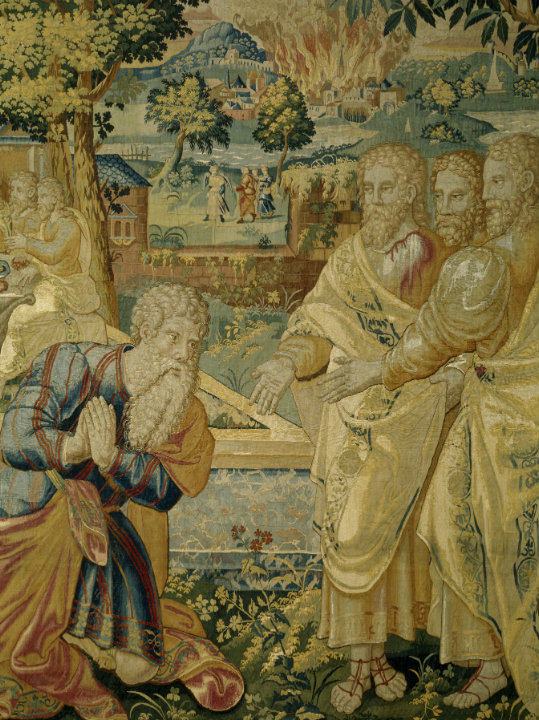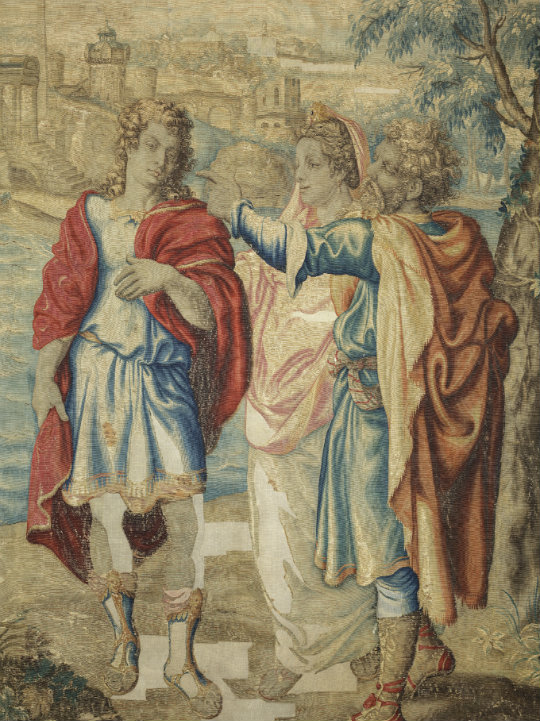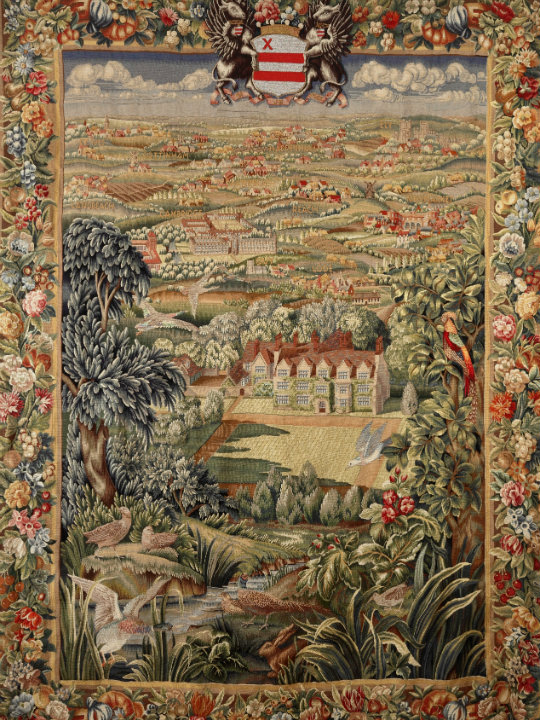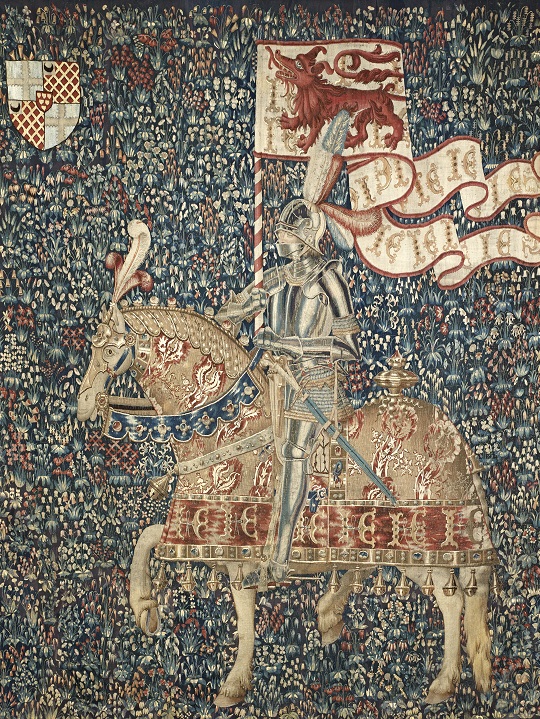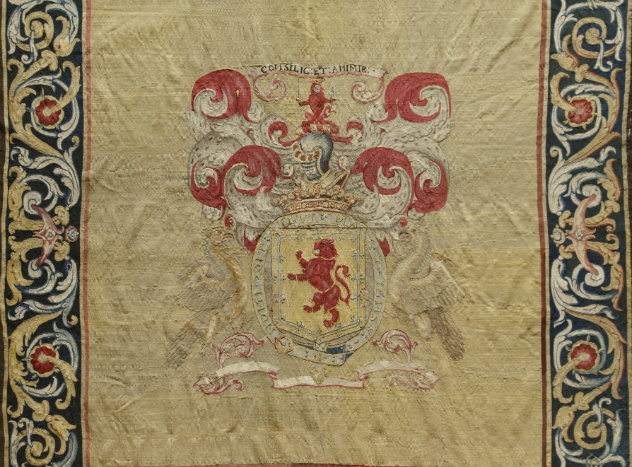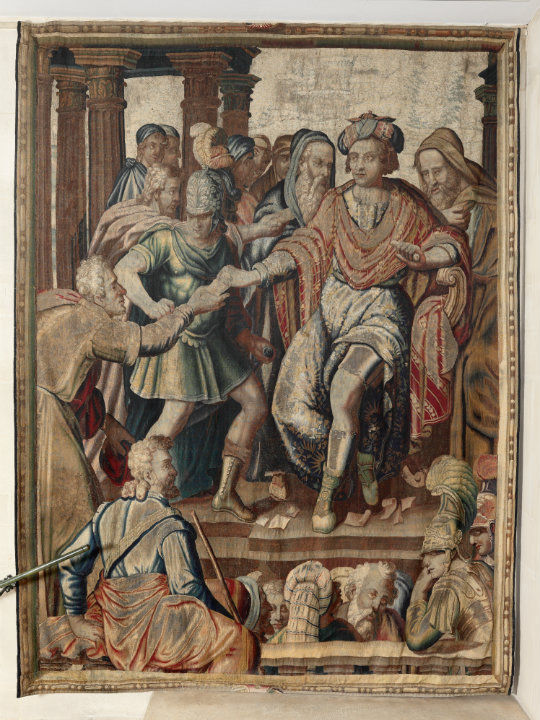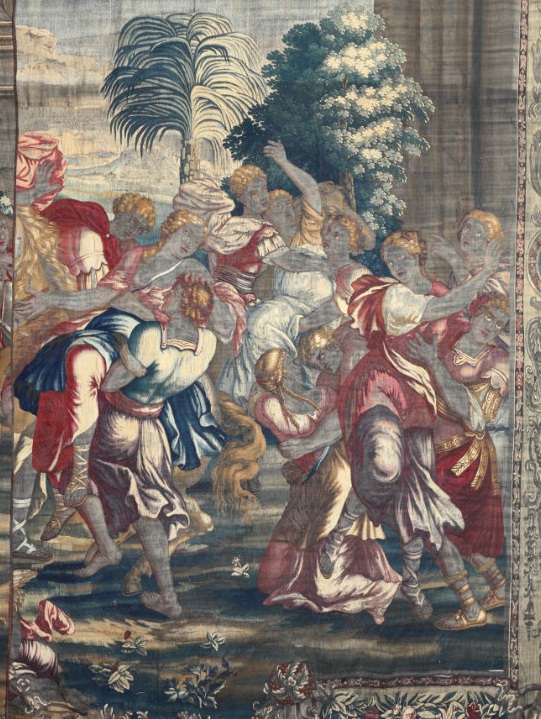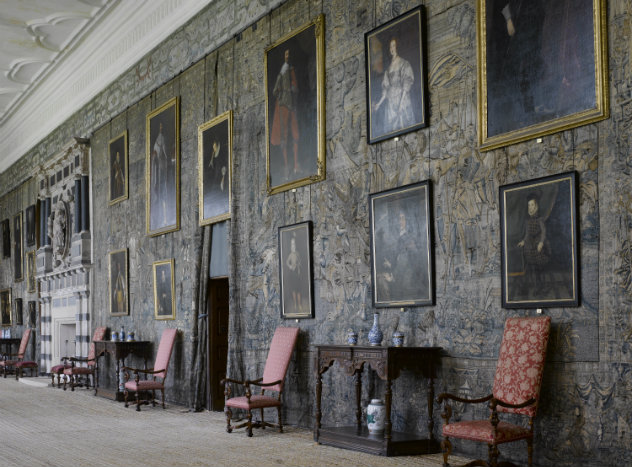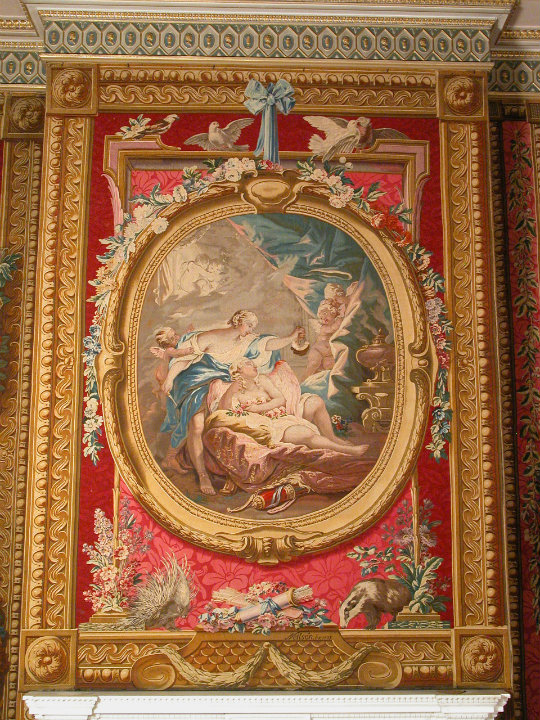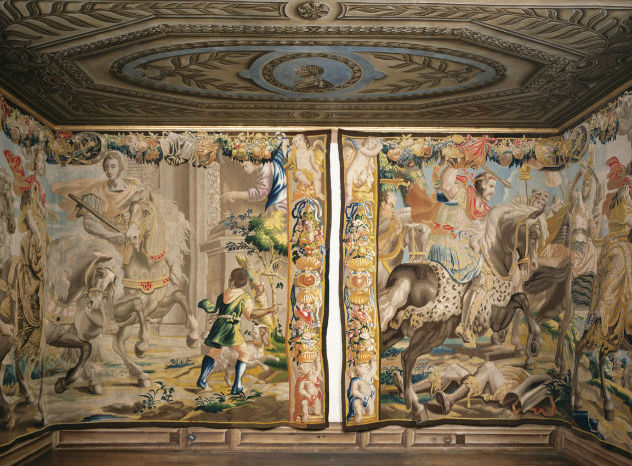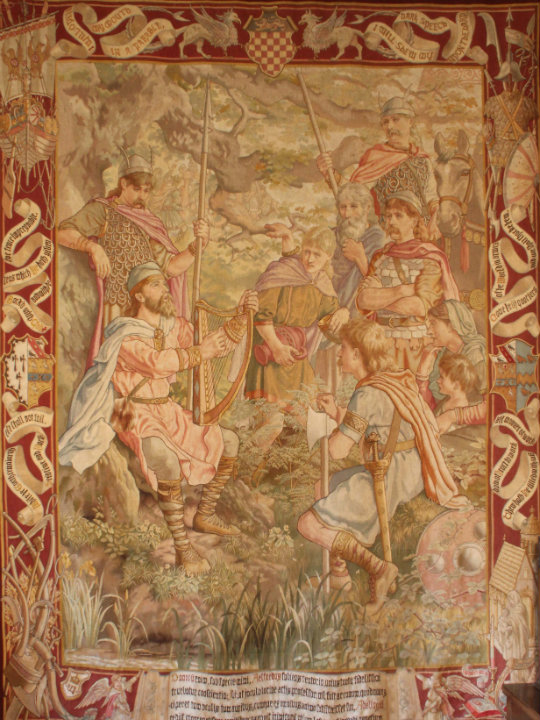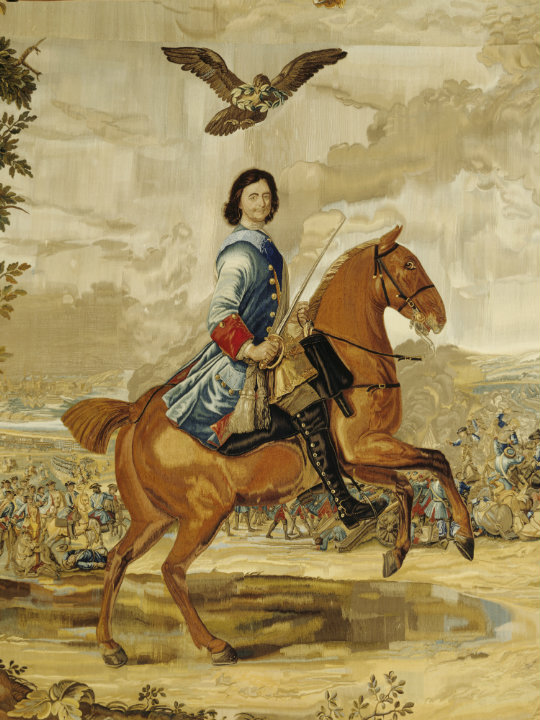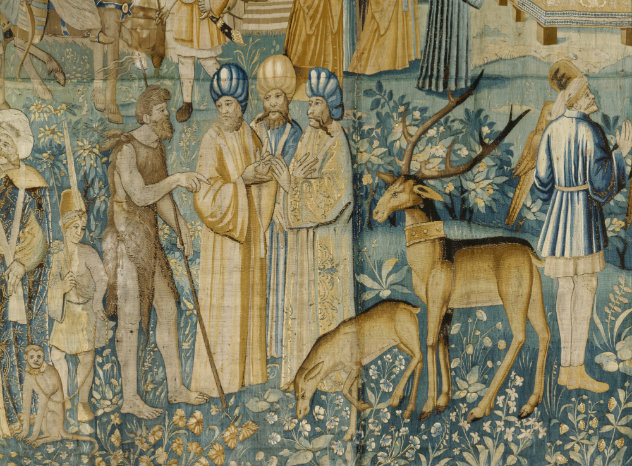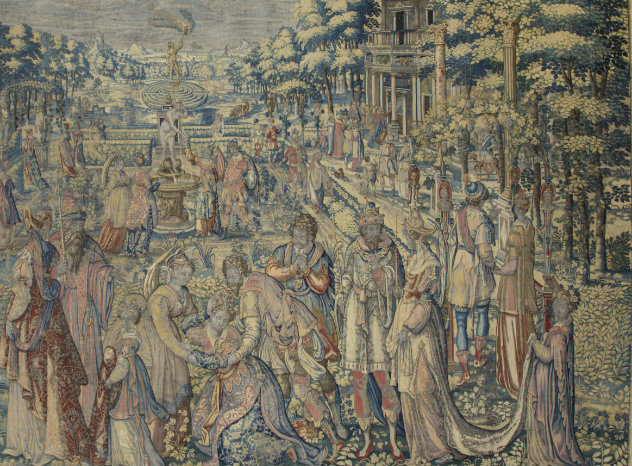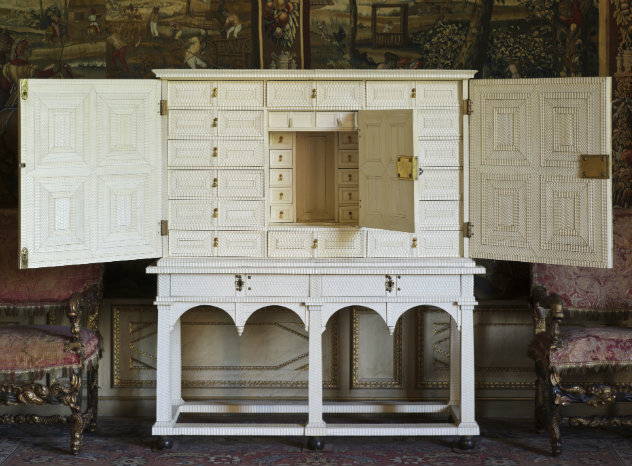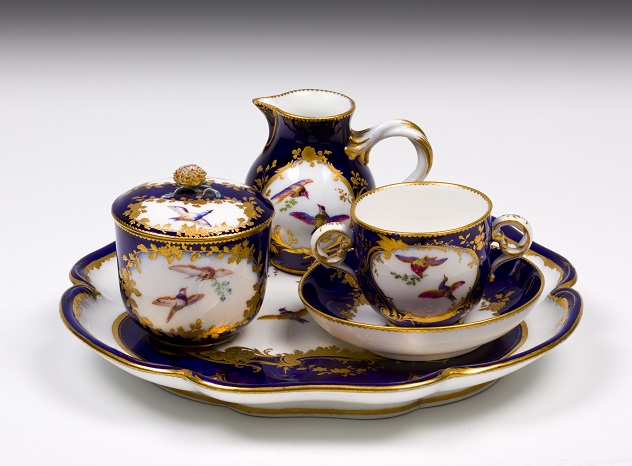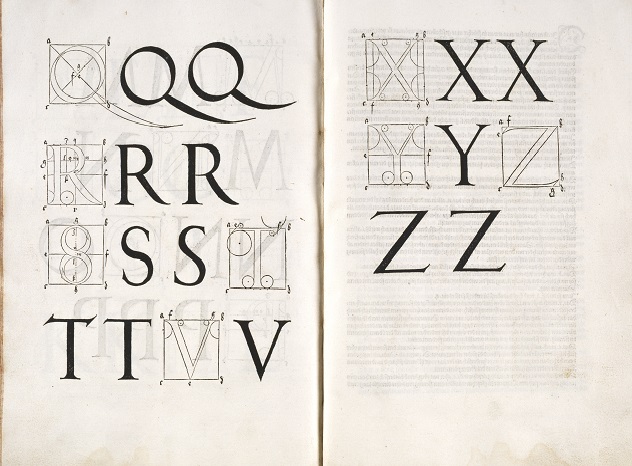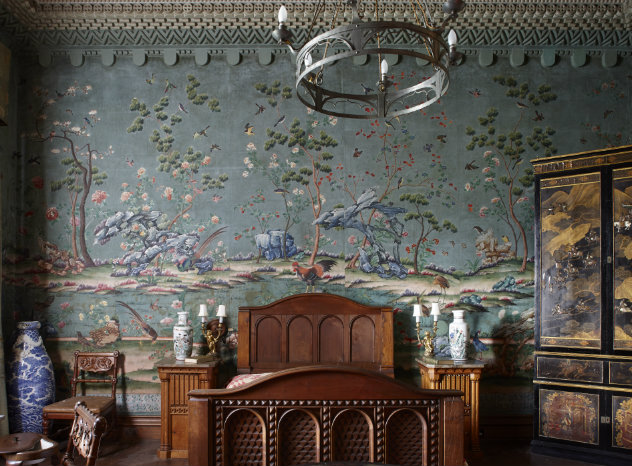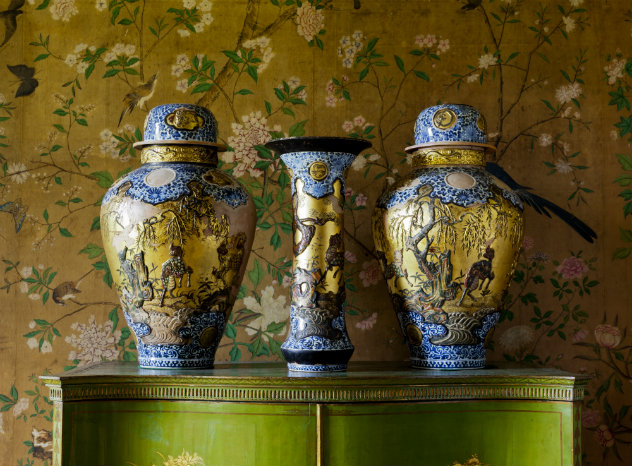The National Trust owns the largest collection of tapestries in Britain and one of the largest in the world, with around 650 items in over 200 historic houses.
Some houses contain internationally significant tapestry collections. For example, at Hardwick Hall there are over 100 tapestries, many of them still hanging as recorded in Bess of Hardwick's will in 1601. At Cotehele a collection of 17th-century tapestries was hung over every inch of wall space, almost like wallpaper, during the 18th century.
Others have been gathered more recently. At Anglesey Abbey, Lord Fairhaven assembled an excellent collection of mainly 17th-century tapestries during the 1920s and 1930s, and he also commissioned brand new hangings from the local Cambridge Tapestry Company. Montacute is home to a small but outstanding group of late medieval tapestries bequeathed by Sir Malcolm Stewart in 1968, including masterpieces like the Knight with the Arms of Jean de Daillon.
Research and discoveries
Important tapestries have been discovered recently through cataloguing and research work. An exquisitely-coloured but much damaged panel with grotesque decoration, long forgotten in storage at Ham House, has emerged as perhaps the earliest surviving tapestry made at the Mortlake workshop, set up for Charles I on the banks of the Thames in 1619.
A dirty and blackened tapestry on the staircase at Anglesey Abbey turns out to have folded-in borders with the arms of the Duke of Savoy, and to have been made in Paris in the 1610s.
Three long-overlooked tapestries of the 'History of Alexander' at Hardwick Hall are now known to be copied after painted silk hangings from the collection of Louis XIV - and to represent not Alexander but the Story of the Sabines.
Original settings
Many tapestries are displayed in the houses for which they were originally acquired. We can trace their history, the changes in their use and the way people have appreciated them. In this way the National Trust's tapestries give us a unique insight into the significance of a medium which today can be difficult to understand.
Although now covered with paintings, the Gideon tapestries in the Long Gallery at Hardwick still define the space as they did in the 1590s. At Powis Castle, the State Bed, still hung with the 'Antony and Cleopatra' tapestries made in the 1670s, is a remnant of a French courtly form imported to mid-Wales. The spectacular tapestry room at Osterley demonstrates the transformative power of the tapestry medium, while at Tyntesfield two detailed historical scenes from the Life of King Alfred, woven in Windsor in the 1880s, are a perfect complement to the exuberant late Victorian decoration of the house.
History and politics
Some tapestries had clear ceremonial and diplomatic functions. A vast tapestry of Peter the Great was presented to the Earl of Buckinghamshire when he was Ambassador to Russia, and installed by him at Blickling as a memorial to his mission. At Powis Castle, a mysterious representation of an embassy to an Eastern ruler was surely made to commemorate a now-forgotten meeting, but its coats of arms and Latin motto continue to puzzle scholars.
Politics are present in other ways too, for instance the refined 'Metamorphoses' tapestries at Knole, made in Delft but woven with the mark of the city of Brussels, perhaps as an act of defiance by the weaver François Spiering against the country he had fled due to religious persecution.
The National Trust's tapestries represent a monument to the tapestry industry of Europe, to a medium whose importance is often forgotten, and to the changing tastes of English patrons and collectors over the last 500 years.
